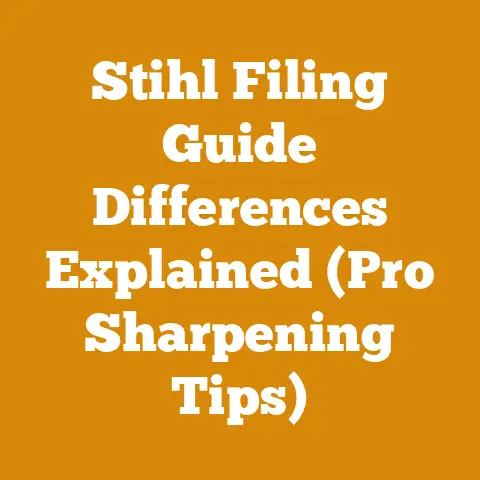Wood Stove Draft Tips (7 Pro Tricks for Peak Heat Efficiency)
Let’s get your wood stove roaring efficiently right away! A simple trick to instantly improve your draft is to preheat the flue. Before starting your fire, hold a lit newspaper or propane torch inside the firebox, aiming up into the flue. This warms the air in the chimney, creating a stronger updraft and preventing smoky startups. Now, let’s dive into the details to truly master your wood stove draft.
Understanding Wood Stove Draft: The Foundation of Efficient Burning
Before diving into the tips, it’s crucial to understand the fundamentals of wood stove draft. Draft, in simple terms, is the flow of air from the room, through the firebox, up the chimney, and out into the atmosphere. This airflow is driven by the difference in air pressure between the inside and outside of the chimney. Hot air rises, creating lower pressure in the chimney, which draws in cooler air from the room to fuel the fire.
-
Key Terms:
- Draft: The movement of air through the wood stove system.
- Flue: The internal passage inside the chimney.
- Firebox: The combustion chamber of the wood stove.
- Creosote: A flammable byproduct of incomplete combustion that accumulates in the chimney.
- Seasoned Wood: Wood that has been dried to a moisture content of 20% or less.
- Green Wood: Freshly cut wood with a high moisture content.
-
Why Draft Matters:
-
Efficient Combustion: A strong draft provides ample oxygen for complete combustion, maximizing heat output from your wood.
- Reduced Smoke: Proper draft minimizes smoke escaping into the room, creating a cleaner and healthier environment.
- Decreased Creosote Buildup: Complete combustion reduces the formation of creosote, lowering the risk of chimney fires.
- Easier Startup: A good draft makes starting a fire much easier, eliminating the frustration of struggling to get the flames going.
1. Chimney Height: The Tall Tale of Effective Draft
The height of your chimney is a critical factor in determining draft strength. The taller the chimney, the greater the difference in air pressure between the top and bottom, resulting in a stronger draft.
- The 10-3-2 Rule: A widely accepted guideline is the “10-3-2 rule.” This means the chimney should extend at least 3 feet above the highest point where it penetrates the roof and at least 2 feet higher than any part of the building or neighboring structure within 10 feet.
- My Experience: I once helped a neighbor with a chronic smoking problem in his wood stove. After inspecting his setup, I discovered his chimney was significantly shorter than the peak of his roof. Extending the chimney by 4 feet, following the 10-3-2 rule, completely resolved the issue.
- Data and Insights: Studies have shown that increasing chimney height can improve draft by as much as 20-30%. This translates to a significant increase in heating efficiency and a reduction in smoke.
-
Practical Steps:
- Measure: Carefully measure the height of your chimney relative to the roof and surrounding structures.
- Assess: Determine if your chimney meets the 10-3-2 rule.
- Extend (If Necessary): If your chimney is too short, consider extending it using approved chimney components. Consult with a professional for proper installation.
- Cost Considerations: Chimney extensions can range from \$100 to \$500 or more, depending on the material and complexity of the installation.
- Safety First: Always prioritize safety when working on a roof. Use proper safety equipment, such as a harness and fall protection.
2. Chimney Diameter: Sizing It Right for Optimal Flow
The diameter of your chimney flue must be properly sized to match your wood stove. An undersized flue restricts airflow, while an oversized flue can cause the smoke to cool too quickly, leading to creosote buildup and poor draft.
- Manufacturer’s Recommendations: The best way to determine the correct flue diameter is to consult your wood stove manufacturer’s specifications. They will provide the recommended flue size for optimal performance.
- Common Sizes: Common flue sizes for wood stoves range from 6 inches to 8 inches in diameter.
- The Importance of Matching: Matching the flue size to the stove’s output is crucial. A stove designed for a 6-inch flue will likely perform poorly with an 8-inch flue and vice-versa.
- Case Study: I once encountered a homeowner who had installed a new wood stove but was experiencing persistent smoking issues. After investigating, I found that he had connected a 6-inch stove to an 8-inch chimney flue. The oversized flue caused the smoke to cool and condense, resulting in creosote buildup and a weak draft. Replacing the flue with a properly sized 6-inch liner completely solved the problem.
-
Practical Steps:
- Consult the Manual: Refer to your wood stove’s owner’s manual for the recommended flue size.
- Measure: If you’re unsure of your current flue size, measure its internal diameter.
- Install a Liner (If Needed): If your existing chimney flue is the wrong size, consider installing a stainless steel liner of the correct diameter.
- Tool Specifications: Use a measuring tape or caliper to accurately measure the flue diameter.
- Material Specs: Stainless steel chimney liners are durable and resistant to corrosion.
3. Cleanliness is Key: Sweeping Away Draft Obstacles
A clean chimney is essential for maintaining a strong draft. Creosote buildup, soot, and debris can significantly restrict airflow, leading to poor combustion and an increased risk of chimney fires.
- The Creosote Threat: Creosote is a highly flammable byproduct of incomplete combustion. It accumulates in the chimney flue as smoke cools and condenses.
- Regular Cleaning Schedule: The frequency of chimney cleaning depends on the type of wood you burn and how often you use your stove. As a general rule, have your chimney inspected at least once a year and cleaned as needed. If you burn a lot of softwood or green wood, you may need to clean it more frequently.
- My Personal Rule: I personally clean my chimney every spring after the heating season ends. This ensures that any accumulated creosote is removed before it has a chance to harden over the summer.
-
Signs of Creosote Buildup:
- Thick, black, tar-like deposits inside the chimney.
- Reduced draft.
- Smoke escaping into the room.
- A strong, acrid odor when the stove is burning.
-
Cleaning Methods:
-
DIY Chimney Cleaning: You can clean your chimney yourself using a chimney brush and extension rods. Be sure to wear appropriate safety gear, including a dust mask and eye protection.
- Professional Chimney Sweep: Hiring a professional chimney sweep is a safer and more thorough option. They have the tools and expertise to properly clean your chimney and identify any potential problems.
-
Tools and Equipment:
-
Chimney brush (size appropriate for your flue)
- Extension rods
- Dust mask
- Eye protection
- Drop cloths
- Cost Estimates: Professional chimney cleaning typically costs between \$150 and \$300.
4. Air Supply: Feeding the Fire with Enough Oxygen
Your wood stove needs an adequate supply of air to burn efficiently. Restricting the air supply can lead to incomplete combustion, excessive smoke, and a weak draft.
- Dedicated Air Intake: Many modern wood stoves have a dedicated air intake that draws air from outside the house. This ensures a consistent supply of oxygen, regardless of the room’s air pressure.
- Room Air Supply: If your stove doesn’t have a dedicated air intake, it relies on air from the room. Make sure the room is adequately ventilated by opening a window or door slightly.
- The Negative Pressure Problem: Modern, tightly sealed homes can create negative pressure, making it difficult for the stove to draw in enough air.
- My Solution: In my own home, I installed an outside air kit for my wood stove. This significantly improved the draft and reduced the amount of smoke escaping into the room.
-
Practical Steps:
- Check for Obstructions: Ensure that the air intake is not blocked by furniture, curtains, or other objects.
- Open a Window: If your stove relies on room air, try opening a window slightly to increase the air supply.
- Install an Outside Air Kit: Consider installing an outside air kit to provide a dedicated source of fresh air.
- Tool Specifications: An outside air kit typically includes a flexible duct, an intake hood, and mounting hardware.
- Strategic Advantages: An outside air kit can improve combustion efficiency, reduce smoke, and prevent negative pressure problems.
5. Fuel Quality: The Dry Wood Difference
Burning seasoned wood is crucial for achieving a strong draft and efficient combustion. Green wood contains a high moisture content, which requires a significant amount of energy to evaporate before the wood can burn. This leads to reduced heat output, increased smoke, and creosote buildup.
-
Green Wood vs. Seasoned Wood:
- Green Wood: Freshly cut wood with a moisture content of 50% or higher.
- Seasoned Wood: Wood that has been dried to a moisture content of 20% or less.
- Drying Time: The amount of time it takes for wood to season depends on the type of wood, the climate, and how it’s stacked. Generally, hardwood takes at least 6-12 months to season properly.
- Moisture Content Measurement: Use a moisture meter to check the moisture content of your wood. Aim for a reading of 20% or less.
- My Drying Method: I stack my firewood in long rows, elevated off the ground on pallets, and covered with a tarp on top but with open sides for air circulation. This allows the wood to dry quickly and evenly.
-
Signs of Seasoned Wood:
-
Cracks in the end grain.
- Lighter in weight than green wood.
- A dull, gray color.
- A hollow sound when struck against another piece of wood.
- Data and Original Insights: Studies have shown that burning seasoned wood can increase heat output by as much as 50% compared to burning green wood.
-
Practical Steps:
-
Plan Ahead: Start seasoning your firewood well in advance of the heating season.
- Stack Properly: Stack your firewood in a way that allows for good air circulation.
- Use a Moisture Meter: Regularly check the moisture content of your wood to ensure it’s properly seasoned.
- Wood Type Selections: Hardwoods like oak, maple, and ash are generally preferred for firewood because they burn longer and produce more heat.
- Moisture Content Targets: Aim for a moisture content of 15-20% for optimal burning.
6. Wood Stove Placement: Location, Location, Location
The location of your wood stove within your home can affect its draft. A stove located in a cold, drafty area may have a harder time establishing a strong draft.
- Central Location: Ideally, your wood stove should be located in a central area of your home where it can evenly distribute heat.
- Avoid Drafty Areas: Avoid placing your stove near exterior doors or windows that can create drafts.
- Heat Distribution: Consider how the heat will circulate throughout your home from the stove’s location.
- My Experience: I once helped a friend who had placed his wood stove in a poorly insulated room with several large windows. The cold drafts in the room made it difficult for the stove to establish a strong draft. Moving the stove to a more central location in his home significantly improved its performance.
-
Practical Steps:
- Assess Your Home: Evaluate the layout of your home and identify potential drafty areas.
- Consider Alternatives: If your stove is located in a drafty area, consider moving it to a more suitable location.
- Improve Insulation: Improve the insulation in the area around your stove to reduce drafts.
- Strategic Insights: Careful stove placement can improve heat distribution and reduce the impact of drafts on stove performance.
7. Barometric Dampers: Fine-Tuning the Draft
A barometric damper is a device installed in the chimney flue that helps to regulate the draft. It works by automatically adjusting the amount of air entering the chimney, preventing over-drafting and ensuring a more consistent burn.
- Over-Drafting: Over-drafting occurs when the chimney draft is too strong, causing the fire to burn too quickly and waste fuel.
- How Barometric Dampers Work: A barometric damper consists of a hinged flap that opens and closes in response to changes in chimney pressure. When the draft is too strong, the flap opens, allowing air to enter the chimney and reduce the draft. When the draft is too weak, the flap closes, increasing the draft.
-
Benefits of Barometric Dampers:
- Improved fuel efficiency.
- More consistent burn.
- Reduced creosote buildup.
- Prevention of over-drafting.
- Case Study: I installed a barometric damper on my wood stove after experiencing problems with over-drafting. The damper significantly improved the stove’s performance, resulting in a more consistent burn and reduced fuel consumption.
-
Practical Steps:
-
Consult with a Professional: Consult with a qualified wood stove installer to determine if a barometric damper is right for your stove.
- Install Properly: Ensure that the damper is installed correctly according to the manufacturer’s instructions.
- Adjust as Needed: Adjust the damper settings as needed to achieve optimal performance.
- Cost Estimates: Barometric dampers typically cost between \$50 and \$150.
- Skill Levels Required: Installation of a barometric damper may require some technical skills. Consider hiring a professional if you’re not comfortable with the installation process.
Bonus Tip: Top-Down Burning Method
Consider using the top-down burning method. This method involves placing larger logs at the bottom, followed by kindling and finally, tinder on top. Lighting the fire from the top creates a cleaner, more efficient burn with less smoke, contributing to a better draft over time.
Safety Considerations for Wood Stove Operation
Operating a wood stove safely is paramount. Here are some crucial safety considerations:
- Carbon Monoxide Detectors: Install carbon monoxide detectors on every level of your home, especially near sleeping areas. Carbon monoxide is a colorless, odorless gas that can be deadly.
- Smoke Detectors: Ensure that your smoke detectors are working properly and have fresh batteries.
- Clearance to Combustibles: Maintain adequate clearance between your wood stove and combustible materials, such as furniture, curtains, and walls. Refer to your wood stove manufacturer’s specifications for the recommended clearances.
- Hearth Protection: Protect the floor around your wood stove with a non-combustible hearth.
- Fire Extinguisher: Keep a fire extinguisher readily available in case of a fire.
- Never Use Flammable Liquids: Never use gasoline, kerosene, or other flammable liquids to start a fire.
- Supervise Children and Pets: Keep children and pets away from the wood stove.
- Regular Inspections: Have your wood stove and chimney inspected annually by a qualified professional.
Next Steps: Implementing These Tips for a Warmer Home
Now that you’re equipped with these seven pro tips, it’s time to take action. Start by assessing your current wood stove setup and identifying areas for improvement. Prioritize the most critical factors, such as chimney height, flue size, and cleanliness. Gradually implement the other tips as needed to fine-tune your draft and achieve peak heat efficiency.
- Create a Checklist: Create a checklist of the tips discussed in this guide and use it to track your progress.
- Consult with Professionals: Don’t hesitate to consult with qualified wood stove installers or chimney sweeps for assistance.
- Monitor Your Results: Monitor the performance of your wood stove after implementing each tip. Pay attention to the draft, smoke output, and fuel consumption.
- Enjoy the Warmth: With a properly functioning wood stove, you can enjoy a warm and cozy home all winter long.
By following these tips and prioritizing safety, you can transform your wood stove from a source of frustration into a reliable and efficient heating solution. Remember, a little effort in optimizing your draft can make a big difference in your comfort and fuel savings. Happy burning!






